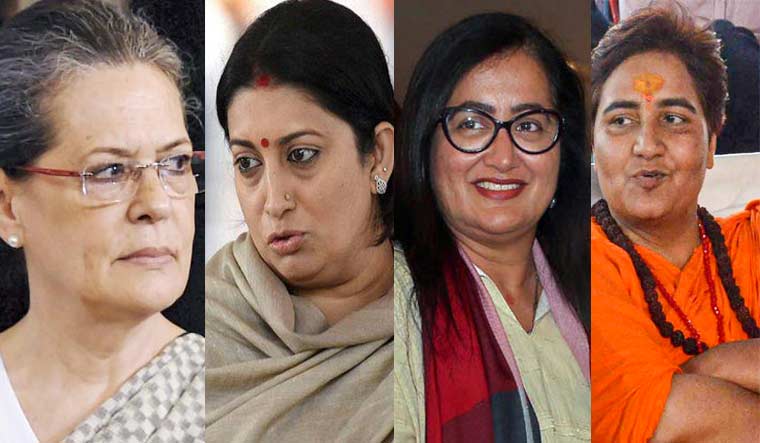Seventy-six women are entering the 17th Lok Sabha, the highest ever in the history of India. This means a 14 per cent representation in the lower house. Women in Parliament have had an interesting history in India. In terms of numbers, the growth has been slow, and is still miles away from the 33 per cent representation. In 1952, the Lok Sabha had just 22 women.
The 17th Lok Sabha has many firsts regarding women representation beyond it being the highest represented one. The 2019 general elections saw the highest number of women candidates, 715. Naveen Patnaik-led BJD in Odisha had 33 per cent representation of women in its candidates, while Mamata Banerjee-led Trinamool Congress had 41 per cent women candidates. Since Odisha has just 21 Lok Sabha seats, number of Patnaik's women candidates was just seven, of which five won. The two other women who won from Odisha were from the BJP. Again, the TMC's 41 per cent was translated into 17 candidates of which nine won.
Also read
The BJP and the Congress had the largest number of women candidates—around 50 each.
It is not simply in these statistics that history was made; it was also in the “how” of the wins. Sonia Gandhi stood tall around a decimated Congress, the only candidate of the party, woman or otherwise, who won in Uttar Pradesh. A record. Smriti Irani is the other historical warrior from Uttar Pradesh, who broke into the Congress family citadel of Amethi and won the seat from party president Rahul Gandhi.
Down south in Karnataka, another woman made history, quietly and with dignity. Sumalatha, former Kannada actress, stepped into politics after her actor-politician husband died last year. Denied a Congress ticket, she stood as independent and felled Nikhil, who had all the might of his chief minister father H.D. Kumaraswamy behind him. Sumalatha became the first independent parliamentarian from Karnataka, male or female, to enter the Lok Sabha in 52 years.
Sadhvi Pragya, who defeated Digvijay Singh, is another winner to take note of. Jailed for years in connection with 2008 Malegaon blast case, Pragya's campaign was toxic, a sharp contrast to Sumalatha's dignified one.
As with the men, the Lok Sabha will have a varied representation of women.
In the last Lok Sabha, women had occupied important positions, with two of them—Sushma Swaraj and Nirmala Sitharaman—in the Cabinet Committee on Security. The speaker, too, was a woman—Sumitra Mahajan.
This time, several women issues were raked up during the elections. Whether it was the appeasement of woman voter with schemes like Ujjwala for rural women, or the triple talaq ban for Muslim women, the female electorate was being perceived as an independent vote bank finally.
Now, with more of the women inside the lower house, it will be interesting to see how gender politics and development plays out in the next five years.



